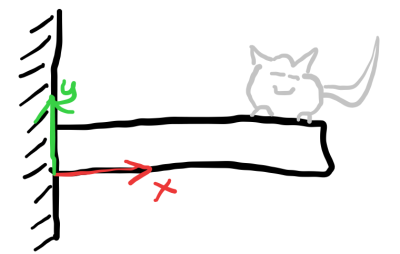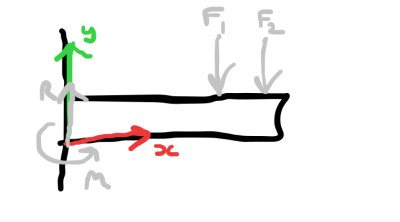User Tools
Considerations in design shall, at minimum, include
- Deflections
- Deformations
- Static Loads
- Dynamic Loads
Fundamental to the above consideration is the deduction of stresses (loads applied over a unit surface area) versus the material strength. If stresses exceed the elastic deformation limit then irreversible plastic deformation will start potentially leading to the eventual catastrophic failure of the material.
Let's consider a critter of known mass is standing on a fixed beam at a known distance from the beam origin and you want to know at which point in the beam are the stresses highest.
This can be abstracted as follows and, with Newton's third law, it is possible to determine reaction forces and moments.
Let's determine the forces and moments on the beam on an arbitrary distance from the beam origin. To so we make examine the forces and moments at x that keep the beam in equilibrium. This force is parallel with the beam's cross section is called Shear and V is its symbol. But how are Moment at x related to Shear at x?
$ V = {{dM} \over {dx}} $ or Shear is equal to the rate of change of Moment along a beam.



